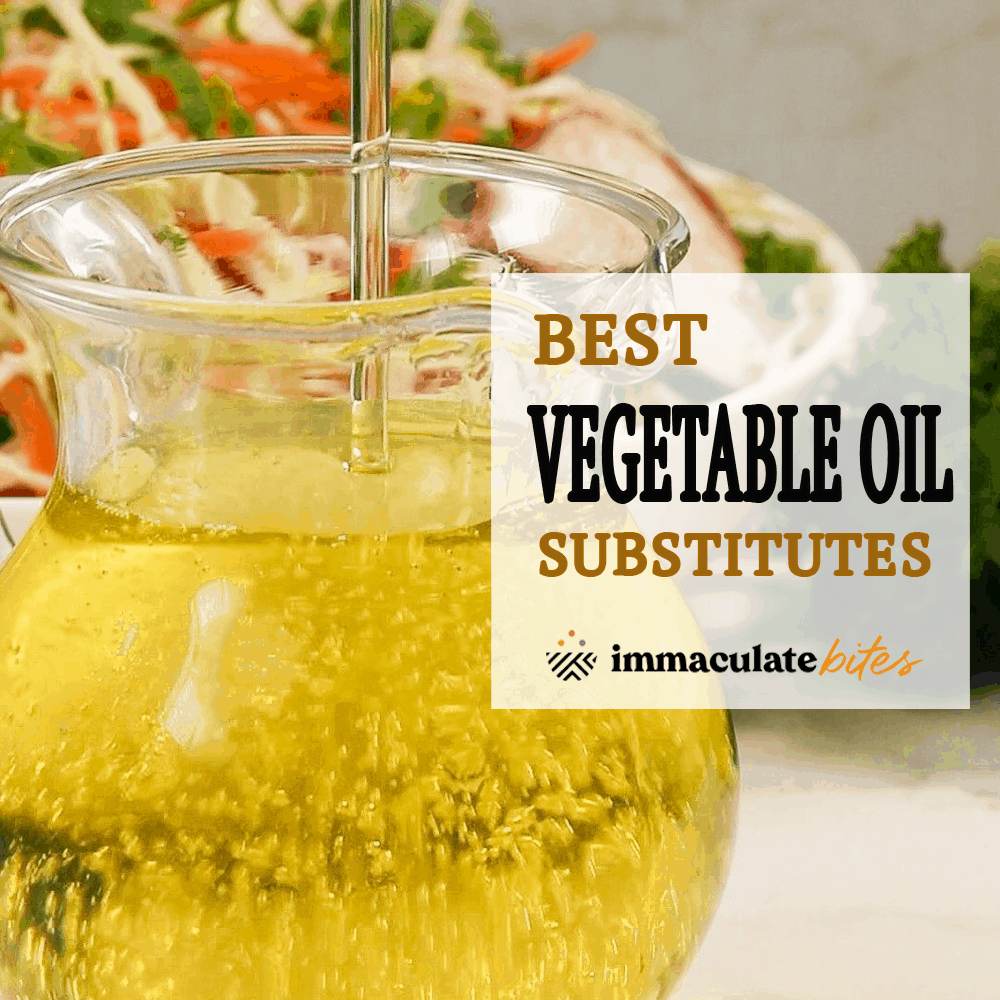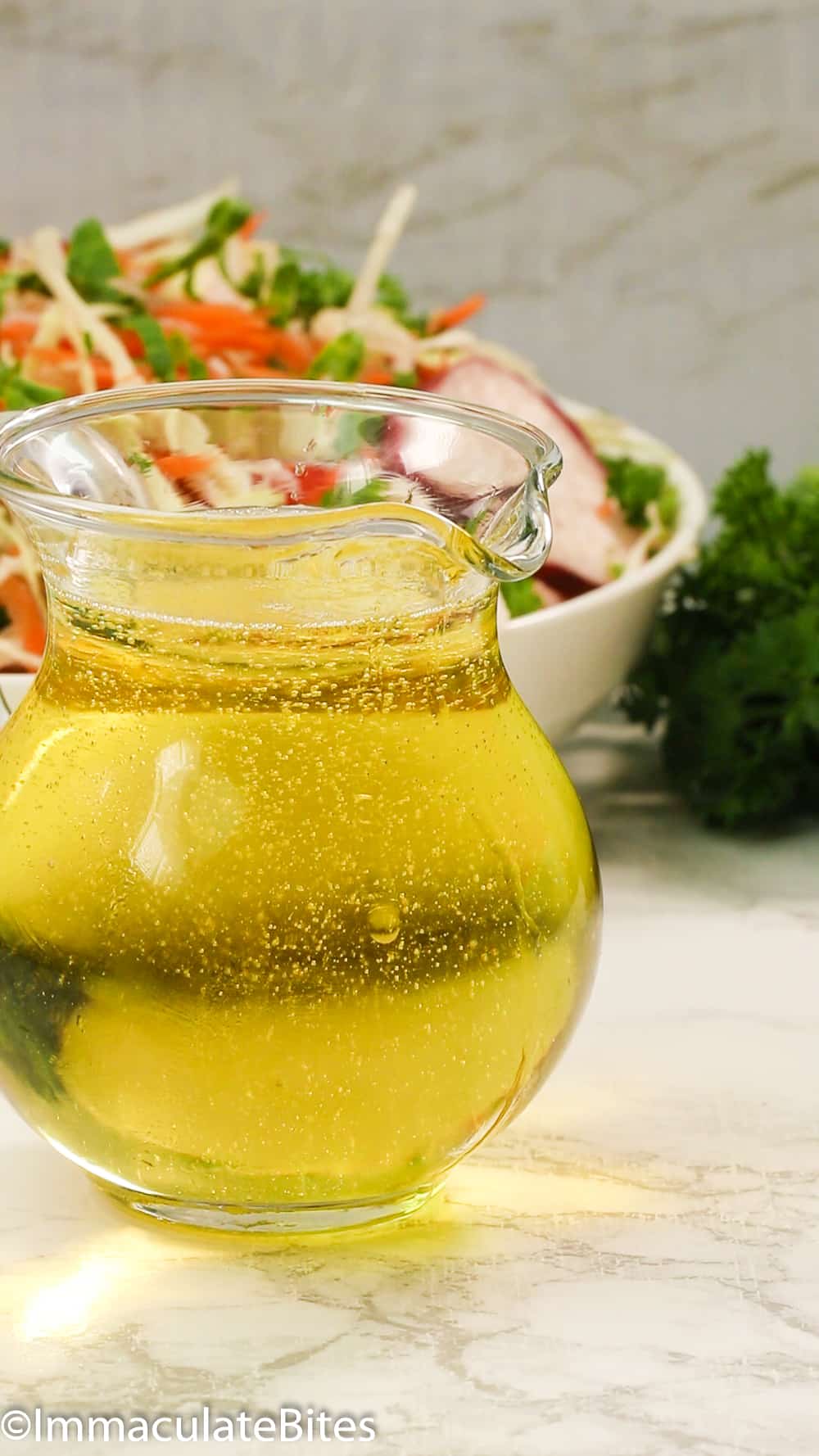Vegetable oil has a neutral flavor and can handle high heat. Unfortunately, many people find it a less-than-healthy option because the “vegetables” in vegetable oil, including corn, soy, cottonseed, peanut, and canola oils, aren’t really vegetables. Having a list of healthy substitutes for vegetable oil will make your life easier.

Vegetable oil is usually the cheapest oil and has been a staple in my kitchen for years. Regrettably, it is not the healthiest option.
With the current global challenge, increased food allergies, and higher awareness of what we eat affects our bodies, people are looking for a healthier alternative to our not-so-healthy staples.
The Best Vegetable Oil Substitutes
Since vegetable oil has a neutral flavor, other neutral-flavored oils are at the top of the list. Another detail that makes a big difference in whether the oil has a strong taste and is appropriate for frying is if it’s refined or unrefined.
Of course, refined oil has a lot of the good stuff taken out of it. However, it can take a higher temperature before it starts smoking.
The smoke point is when oil will start smoking, effectively ruining any food value it would have had otherwise.
All of the following substitutes for vegetable oil can replace it with the same amount—no adjusting for differences necessary.
Grapeseed Oil
One of the most economical options is grapeseed oil. I love using this oil as a substitute for vegetable oil because it has almost no flavor, handles high heat (420℉/215℃), and is a healthier option.
Canola Oil
Many vegetable oils have a high percentage of canola oil. It is made from rapeseed (a brassica just like cabbage and mustard) and is almost flavorless.
It is has a lower smoke point than other oils (225-400℉/107-204℃, depending on if it’s refined or unrefined). However, it can be highly processed. Some oils are best if organic, and canola is one of them.
Safflower Oil
People often overlook safflower oil. However, it boasts many health benefits and a high smoke point (450-500℉/℃). It has a neutral taste and is excellent for deep frying.
Avocado Oil
The best oils are also the most expensive. The first time I fried potatoes in avocado oil, the results amazed me. So crispy and delicious.
I was visiting a family, so I didn’t realize how expensive it was. When I saw the price tag, I decided to stick with grapeseed oil.😅
Refined avocado has a smoke point of 520℉/210℃ and is great for deep-frying.
Sunflower Oil
Another one of my standby oils is sunflower oil. The neutral flavor makes it perfect for salad dressing and mayo.
It’s also commonly found in vegetable oil because it’s ideal for cooking. The smoke point for refined sunflower oil is 450-490℉/232-255℃.
Melted Butter or Ghee
Butter (smoke point 300℉/150℃) is excellent for baking and ghee (smoke point 482℉/250℃) for baking or frying.
You can make clarified butter or ghee by melting butter until the milk solids separate and then skimming them off, leaving only the fat. The result is a higher smoke point and longer shelf life.
It is not flavorless, but that isn’t bad if you love the flavor of butter as I do.
If you need the oil to stay in a liquid state, this is not an ideal replacement. But, for frying and baking, it is delicious.
Coconut Oil
Experts are still arguing about the health benefits of coconut oil. Some love it, and others hate it.
I love the flavor of coconut, so I’m going to side with the experts that say it’s healthy.
Refined coconut oil offers the advantage of a higher smoke point (400℉/204℃) than virgin coconut oil (350℉/177℃) and a more neutral flavor.
The light coconut flavor is excellent in muffins and desserts. It’s also fantastic in dishes that have coconut milk.
Olive Oil
I believe this is the healthiest oil, hands down— the higher quality oil has a stronger flavor. In savory dishes, this may not present a problem.
It has a low smoke point (320-400℉/℃), so it’s not good for frying. Burning olive oil makes it bitter and destroys any health benefits.
Applesauce
While not useful for frying, replacing oil with applesauce in baking makes for moist and sweet bread or cake.
You can replace the oil with the same amount of applesauce for a delicious, moist, and low-fat dessert.
Try replacing the fat in this Zucchini Bread with applesauce and see how yummy it is.
Lard
Lard has been demonized in the past as being the most unhealthy fat out there. Recently, some doctors have decided it’s not so bad after all.
And so, paleo and keto diets have made lard a popular choice for cooking and baking.
I have to admit, real lard makes the best pie crust and flour tortillas.
Potatoes fried in lard may not be the healthiest choice, but they are certainly the most delicious.
What is Vegetable Oil?

When explaining what vegetable oil is, it’s only fair to remind ourselves that olives, canola (rapeseed), corn, soybeans, safflower, sunflower seeds, peanuts, and even cotton are all considered vegetables.
I don’t know about you, but I wouldn’t classify some of those as vegetables. What it really means is that it’s from vegetation, not animals.
The generic term vegetable oil covers a mix of any oils considered to be vegetables. The most common is soybean and cottonseed.
Common sense tells us that the cheaper the oil, the lower the quality. Ouch! But hey, you get what you pay for. Unfortunately, most vegetable oils are highly processed.
Kinds of Oil
Monounsaturated – Most of the oils above fall somewhere between, which are called monounsaturated fats. They stay liquid most of the time, but some, like olive oil, will become semi-solid if kept in the fridge.
Polyunsaturated – The fats that stay liquid, no matter the weather, and oxidize quickly are usually polyunsaturated. Safflower and sunflower oils are part of this category, and if the label doesn’t say it’s suitable for high heat, it’s not.
Saturated – Stable fats that become solid at room temperature are usually saturated fats. They typically have a higher smoke point, which means they’re great for frying.
Difference Between Oil and Shortening
Oil usually remains in a liquid state while shortening is solid unless melted.
You can use butter, ghee, coconut oil, and lard as a replacement for shortening. They can also substitute vegetable oil as long as you melt them first.
More Delicious Recipes Using Oil
- Hummus – A creamy spread or dip of garbanzo beans, garlic, and olive oil. A wonderful dip with pita bread or veggie sticks.
- Poppy Seed Dressing – Delicious salad dressing that uses olive oil and yogurt for a healthy and delicious topping for almost any salad.
- Beer Battered Onion Rings – Deep-fried deliciousness in the form of onion rings. I’ve included my tips on how to get the beer batter to stick to the onion.

Leave a Review